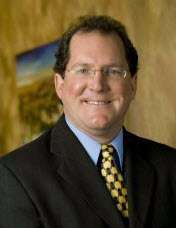 By Reed Tinsley, CPA, CVA, CFP, CHBC
By Reed Tinsley, CPA, CVA, CFP, CHBC
Focus on these hotspots to reduce audit risk. Even if your physician practice puts the strongest policies in place to prevent compliance missteps, a payer audit is always possible. If your practice performs regular self-audits, however, it could reduce anxiety about auditors at your door. Self-audits are one of the most important tasks for practices. Performing self-audits can also help you uncover the reasons behind revenue losses, claim denials, and refund demands.
Before heading full-steam for a self-audit, however, you need to know the areas where your practice is more vulnerable and focus your self-audit on those areas. Check out these common client-asked FAQ’s on what areas you should focus on when preparing for self-audits.
Q: Why do payers decide to audit medical practices?
A: A payer might opt to audit your practice for several reasons: a random event that create an anomaly in your coding/billing, a benchmarking event, etc. However, it may be impossible to determine what triggered an audit. It is possible that your practice may be a government target, but whatever the reason, you must always be prepared for one.
Q: Which coding/billing areas do payers audit most often?
A: Payers decide to audit most frequently due to concerns in the following areas, defined as “The Big Five”:
Evaluation and management (E/M) codes (99201-99215, 99281-99284, etc.)
CPT procedure code utilization by frequency
CPT procedure code utilization by relative value units (RVUs)
Modifier utilization (modifiers 25, 57, 59 [or the new “X” modifiers], etc.)
Time (total provider work hours your practice bills for)
Suggestion: Be sure to keep compliant with all payer rules on all issues – but take extra care to ensure that you have no compliance holes in the aforementioned “Big 5” areas.
Q: What are some specific reasons payers conduct audits?
A: Within the “Big 5” of audit hotspots, there are several specific missteps that could drive auditors to your front door. Practices are frequently audited for these reasons:
No documentation: The provider doesn’t submit any medical records to support the claim. I see this so many times. A bill without documentation should be handled by a patient by requesting a copy of the medical record. Claims without any documentation at all are low-hanging fruit for auditors, as they are often the easiest to prove. With no documentation, there is no support for the bill.
Insufficient documentation: The provider’s documentation lacks certain patient facts that the payer deems vital (e.g., the patient’s overall condition, diagnosis, services the provider performed, etc.). I see this a lot as well. And quantity of documentation does not necessarily equal quality. All too often I see volumes of words on claims, but they don’t say anything nor do they comply with the documentation guidelines.
Medically unnecessary service: The payer’s claim review staff identifies information in the medical record that leads them to decide that services that the provider reported were not medically necessary based on Medicare coverage policies.
Incorrect coding: The provider submits documentation that does not line up with the choice of code. This often occurs when coding for E/M services.
Some of the more frequently incorrect E/M claims are: coding for a consultation (99241-99245) rather than an outpatient office visit (99201-99215); misreporting new (99201-99205) and established (99211-99215) patient E/M codes; and coding for a high-level office visit (99204-99205; 99214-99215) when reporting a lower-level code would have been more accurate.
Suggestion: Make sure your practice is as compliant as possible in the above areas; also, make sure you conduct your self-audits in the areas of most concern to your particular practice.


